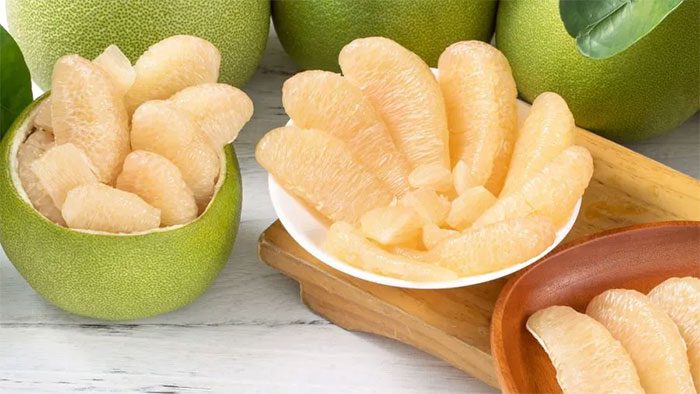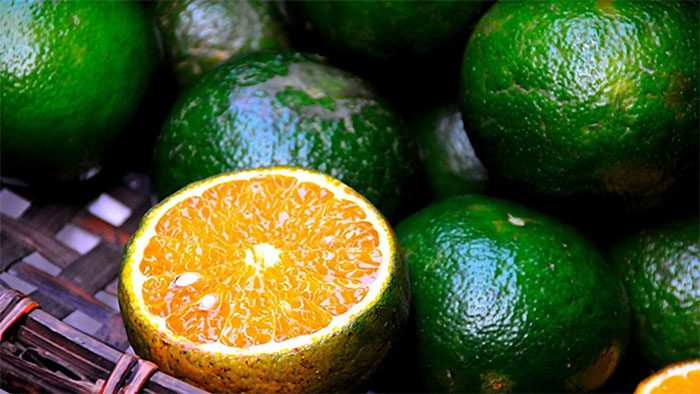10 Low-Sugar Fruits Perfect for Sweet-Toothed Women Who Want to Stay Young.
Some Low-Sugar Fruits Women Should Add to Their Daily Diet
Eating fruit can satisfy your sweet tooth while providing essential nutrients like vitamins and fiber. However, if you want to reduce sugar intake to maintain youthfulness and avoid spikes in blood sugar that can lead to various health issues, it’s best to choose low-sugar fruits.
1. Grapefruit
According to Healthline, grapefruit is a low-sugar fruit that provides an excellent source of vitamin C. A half of a medium-sized grapefruit contains 8.5g of sugar and provides 43% of the daily recommended value of vitamin C. Vitamin C plays a crucial role in immune health and collagen formation, helping to keep skin youthful. It also aids in the absorption of iron from plant sources.
Grapefruit has a low glycemic index, which can help manage diabetes. A 2021 review of studies even found that grapefruit may prevent type 2 diabetes.
You can add grapefruit to salads or meals with non-starchy vegetables like broccoli and lean proteins such as chicken.

A half of a medium grapefruit contains 8.5g of sugar.
2. Berries
Berries have significantly lower sugar content than many other fruits. For example, a raspberry contains about 5g of sugar, strawberries have 7g, and blueberries also have 7g. Berries are also rich in fiber, polyphenols, and vitamins, and they have a low glycemic index.
Consuming fruits with a low glycemic index, such as berries, has been shown to significantly improve hemoglobin A1C levels in people with type 2 diabetes. Hemoglobin A1C, or HbA1C, is a blood test that measures a person’s average blood sugar level over the past three months.
3. Lemons
With their tart flavor, it’s no surprise that lemons are a top choice for low-sugar fruits. Each lemon contains 2.1g of sugar and 2.4g of fiber.
While it’s not advisable to consume lemons on an empty stomach, you can use lemon juice to make delicious salads.
4. Watermelon
Despite its sweet and delicious flavor, watermelon is relatively low in sugar. One cup of diced watermelon provides 9g of sugar. Although many believe watermelon has a high glycemic index, it is 92% water, containing few carbohydrates. Thus, experts categorize it as having a low glycemic index.
This fruit is hydrating and packed with beneficial nutrients, making it great for maintaining smooth skin.
5. Kiwi
One kiwi contains 7g of sugar. These small green fruits rank low on the glycemic index and are a good source of fiber.
They are also an excellent source of vitamin C. One kiwi provides 62% of the daily recommended value of vitamin C and 2.3g of fiber, all for just 48 calories. This makes kiwi an ideal fruit for women aiming for a low-sugar diet.
6. Avocado
Avocado is an extremely nutritious low-sugar fruit. One avocado contains less than 1g of sugar, provides 9g of fiber, and is rich in monounsaturated fats, which help lower cholesterol and improve heart health.
A recent study showed that eating avocado daily for 12 weeks improved blood sugar control. You can add mashed avocado to whole-grain toast or eggs or use it as a dip for vegetables.
7. Oranges

An orange contains less than 13g of sugar.
According to the United States Department of Agriculture, oranges are a sweet citrus fruit that may fit well into a low-sugar diet. An orange contains less than 13g of sugar, 3g of fiber, and 70% of the daily recommended value of vitamin C.
8. Apricots
Apricots are a great snack for those looking to eat low-sugar fruits. Two apricots contain 6g of sugar, 1.4g of fiber, and 34 calories.
You can enjoy fresh apricots or dried apricots as a snack. Although dried apricots have slightly higher sugar content and less fiber, they still rank low on the glycemic index.
Consuming dried apricots in moderation, combined with foods rich in protein and healthy fats (like nuts and cheese), can slow down absorption and prevent spikes in blood sugar.
9. Plums
Plums have lower sugar content than many other fruits. One plum contains less than 7g of sugar, 1g of fiber, and only 30 calories, with a low glycemic index.
Experts recommend choosing juicy, dark-colored plums when buying.
10. Apples
Eating an apple a day can help you better control your blood sugar levels. A meta-analysis of studies including over 330,000 patients showed that regularly eating apples helps reduce the risk of developing type 2 diabetes.
Apples are high in fiber and vitamin C, which takes longer to digest. This reduces the risk of spikes in blood sugar and insulin. Furthermore, most of the sugar in apples comes from fructose, unlike the glucose found in most candies and pastries.
A study published in the American Journal of Clinical Nutrition showed that replacing glucose with fructose can lower blood sugar and insulin levels after meals.
Which Fruits Have a High Glycemic Index?
Fruits with a high glycemic index mean they contain a higher concentration of natural sugars, which can cause a spike in blood sugar levels. However, you don’t need to avoid these fruits entirely; it’s best to consume them in moderation.
Fruits with a high glycemic index include:
- Watermelon
- Pineapple
- Grapes
- Mangoes
- Dried blueberries
What to Consider When Eating Fruits to Avoid Weight Gain and Blood Sugar Spikes?
1. Try to buy fruits with a low glycemic index (GI of 55 or lower). Doing so is one of the easiest ways to manage your blood sugar levels.
2. If you have diabetes, aim to consume 45-60 grams of carbohydrates per meal and 15-20 grams of carbohydrates for snacks – the amount found in a small piece of whole fruit or half a cup of canned fruit.
3. Balance your meals: Combining fruit with a source of protein or healthy fats can help slow the absorption of sugar and reduce its impact on your blood sugar levels.


















































